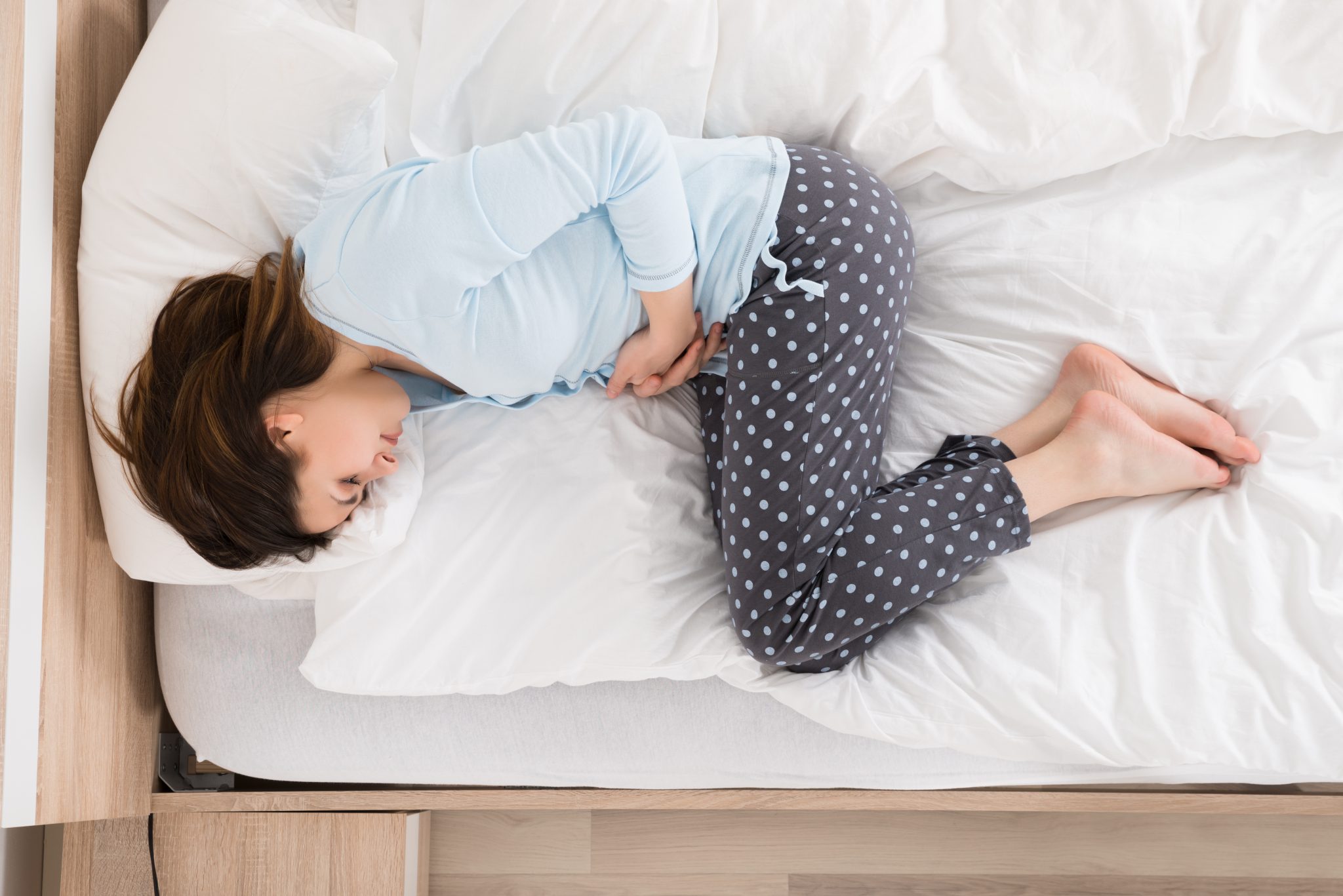
The True Cause of Your PMS
What would you do if you knew what was causing your PMS? Would you decide to take action to get rid of the premenstrual fat suit, tender ta-tas, and super-bitch-dom that take you over every month? Many women struggle with these symptoms (among others) for up to two weeks out of every month. They may try a myriad of herbs, vitamins, or just go on birth control to suppress the issue. Consider for a minute that perhaps PMS is not as “nebulous” and unidentifiable as you might think. You are not actually stuck with the nightmare of sudden weight gain, bloating, mood swings, and cramps. Let’s chat through the most common hidden culprit: estrogen dominance.
To understand this, we should begin with a quick lesson on reproductive physiology—don’t worry, I’ll keep it short and sweet so it won’t bore you!
Estrogen and progesterone are the two main sex hormones in women. Estrogens are naturally occurring hormones responsible for female reproductive system development and maintenance. There are two types: steroidal and non-steroidal. Steroidal estrogens include estrone (E1), estradiol (E2), and estriol (E3). These are the type that your body makes. Non-steroidal estrogens are synthetic or naturally occurring substances (from food or chemicals) that possess estrogenic activity, like xenoestrogens and phytoestrogens.
Estrogen dominance means that the body’s hormones have an excess of estrogen, and therefore are deficient of progesterone. The relationship between these two hormones is crucial to maintain hormonal balance in the body. Think of them like the yin and yang of our reproductive hormones: one being out of whack will disrupt the other, and this hormonal imbalance can cause disturbed mood, irregular periods, and even increased risk of cancer, fibroids, and endometriosis. If estrogen alone is too high, it can lead to endometriosis and growth of lumps, cysts, polyps, and fibroids. In the early stages, most of what you’ll see is worsening PMS and heavy and/or painful periods.
So what causes estrogen dominance? Often, the answer is the natural process of aging, plus medications, the foods we eat, stress, and environmental pollutants. Some women are also more susceptible to estrogen dominance. Women who do not ovulate may have a greater risk of estrogen dominance, as they do not produce enough progesterone to balance the two. Other conditions that may predispose a woman to estrogen dominance include endometriosis, fibroids, PCOS, and insulin imbalance.
Here are some suggestions of foods to avoid if your estrogen is too high:
- Alcohol: blocks GLA production for manufacturing hormones, and damages the liver, which interferes with hormone metabolism, leading to a buildup of negative estrogen.
- Soy: contains xenoestrogens, which act as estrogens in the body, thereby increasing estrogen levels. Soy foods include soymilk, soybeans, and soy protein powders.
- Sugar and Carbohydrates: interferes with the circulation of hormones throughout the body, as both sugar and excess carbohydrates increase fat in the body and fat cells produce estrogen.
- Conventional Meat and Dairy: dairy milk and processed meats contains chemicals including growth hormones, estradiol and other hormone based medications which can increase estrogen levels in the body.
- Caffeine: found in coffee, tea, chocolate soft drinks, and some medications, caffeine can raise adrenaline levels and increase stress, depleting progesterone. Caffeine also bogs down the liver, which leads to a build up of more estrogen in the body.
In addition, here are some other lifestyle factors that may be increasing your estrogen levels:
- Weight Problems: excessive weight adversely affects hormonal balance. Fat cells have an enzyme called Aromatase, which produces estrogen. Being too thin has adverse effects as well. If you fall below a certain weight, ovulation and menstruation can stop, throwing off your cycle and hormonal balance.
- Stress: external stress can cause hormones to decrease or increase, which puts stress on the internal body systems, including depleting progesterone.
- Harmful chemicals: eating organically grown foods helps decrease exposure to the pesticides that are used in conventionally grown foods. Pesticides contain xenoestrogens. BPA plastic and Teflon plans also include xenoestrogen, so be careful not to use and especially not to heat those products, as heating can release estrogens into the food you’re cooking. Phosphates, found in products such as soft drinks, processed meats, and cheese, can also interfere with absorptions of nutrients needed for hormone production.
Uff. That seems like a lot, no? Luckily, we have suggestions for your lifestyle solution! The first priority is to have a healthy diet that focuses on vitamins, minerals, healthy fats, and protein, while removing things that are foreign to the body such as toxins and synthetic hormones.
Besides aging and stress, which cause a decline in progesterone, the typical American diet, high in unhealthy fats, protein, caffeine, simple sugars, and salt is the main contributor to hormonal hell. Here are some tips to create a healthy and balanced diet:
- Buying Organic: Do your best to stick to an organic whole food diet, while avoiding manufactured or processed food products. If buying all organic food is cost prohibitive, try focusing on the veggies and fruits that tend to be more pesticide laden. Google the “dirty dozen” to get an idea of the most important veggies and fruits to eat organic.
- Protein: it is important to get free range, grass fed beef, bison, organic poultry, and organic eggs. Conventional animal foods are hormone and chemical bombs.
- Healthy Fats: Omega-9 (monounsaturated) fats are found in avocado, almond, and olive oils. Omega-3 fats are found in nuts like walnuts, flaxseeds, and fatty fish like wild caught salmon. Omega- 6 fat GLA from hemp seeds, evening primrose, and borage seed oil has been shown to balance hormone levels as well.
- Indole-3-carbinol (I3C): breaks down and detoxifies harmful estrogens. Try cruciferous vegetables such as broccoli, cauliflower, brussels sprouts, cabbage, and collard greens.
- Fiber: a diet higher in fiber decreases estrogen, as fiber binds excess estrogen in the gut, preventing it from being absorbed into the body. Freshly ground organic flax seeds not only have beneficial fiber, and can inhibit the binding of the “bad” estrogens to cells. Make sure flax seed are ground, as that breaks the fibrous outside, and allows the body to absorb and use the nutrients effectively. **Note, once flax is ground, it must be refrigerated and used within a few days to prevent rancidity. You can use a coffee grinder to grind a small batch every few days. Other good sources of fiber include dark green leafy vegetables, nuts and beans.
- Avoid Constipation: keep your bowels moving at least once or twice a day. Bad estrogens leave the body through the bowels. Increasing fiber in your diet can help!
- B Vitamins: help regulate stress, metabolize hormones, and get rid of excess estrogen.
- Milk Thistle: helps to detox the liver, allowing it to function properly in hormone regulation and excretion. Recommended daily intake for milk thistle is 50-150 mg daily.
To learn more about how your diet could be impacting your health, schedule your initial consultation today!


